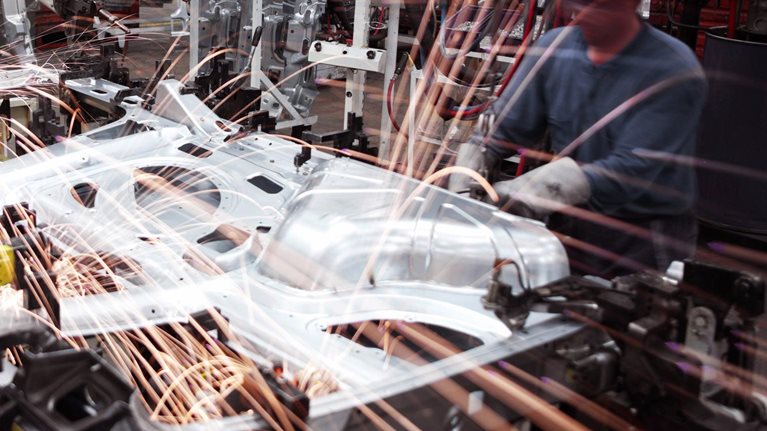It’s a challenging time to be a semiconductor manufacturer. Wages and energy prices have been rising in traditionally low-cost manufacturing locations, while capital expenditures have increased. Meanwhile, competition is increasing, with many new companies entering the market over the past few years. Industry players are rightfully concerned about these developments and have been undertaking a record level of merger-and-acquisition activity, hoping to capture the next wave of productivity improvements.
To remain competitive in this environment, front-end fabs—those that produce wafers—have focused on improving operational efficiency through a combination of lean programs and Industry 4.0 techniques. While lean initiatives are well known for their ability to reduce waste and promote continuous improvement, Industry 4.0 is an emerging concept that involves the increased digitization of the manufacturing sector—everything from big data analytics to increased automation (see sidebar, “What is Industry 4.0?”).
Most back-end factories, which are primarily located in emerging markets, have not yet applied Industry 4.0 techniques to their major tasks, which include the dicing of wafers and the assembly, testing, and packaging of individual semiconductors. In fact, many of these facilities are still struggling to implement the lean techniques that are routine at front-end fabs. Even when back-end factories do achieve some benefits from lean programs, they often have difficulty sustaining improvement.
Stay current on your favorite topics
With cost pressures increasing, it’s time to reverse this situation. Our experience with 20 back-end factories in Asia shows that a more disciplined approach to lean, combined with the introduction of Industry 4.0 techniques, can help companies accelerate and sustain improvement in labor costs, throughput, and quality. Factories can typically realize productivity gains of 30 to 50 percent for direct labor and gains of 10 to 20 percent for maintenance productivity. They can also anticipate average improvement of 10 to 15 percentage points in overall equipment effectiveness (OEE), increases of 1 to 3 percent in yield, and a 30 to 50 percent decrease in customer complaints.
Making the most of labor
At back-end factories, operator touch time—that is, the amount of time an employee spends handling material or operating a machine—accounts for 30 to 50 percent of all labor. For the rest of the workday, employees are often idle while they wait for machines to finish their production cycle. Even if a line is not operating at full capacity, employee-to-machine ratios are fixed, which increases the amount of time that employees aren’t directly engaged in work.
Would you like to learn more about our Semiconductors Practice?
Some back-end factories have managed to improve labor productivity by applying standard lean techniques, such as adjusting worker-machine ratios based on operator touch time, or by introducing flexible staffing to ensure that the number of employees on the floor is appropriate for a factory’s current capacity. These initiatives have produced some improvements, but they’re difficult to sustain—and that means back-end manufacturing is still very labor intensive.
With labor costs continuing to escalate, it’s clear that back-end factories need to step up their lean programs. But they also need to consider Industry 4.0 solutions that can complement and support their efforts. For instance, some factories have equipped machines with sensors that monitor performance. In some cases, engineers analyze the data in a central control room and adjust process parameters as needed; in others, Industry 4.0 tools make the adjustments automatically (exhibit).

Industry 4.0 tools may be particularly helpful for some of a factory’s most labor-intensive tasks, including the loading or unloading of machines, or final packaging. For instance, factories could use collaborative robots with camera-equipped hands to pick and place parts precisely. Since the robots incorporate machine-learning technology, employees can “program” them simply by moving the robot arms and hands to new positions.
In addition to automating many processes, Industry 4.0 tools make workers more effective at the tasks remaining under their remit. One tool, designed for maintenance staff, shows all actions these employees have completed related to a particular task, provides progress updates, and notes when problems have been escalated. The tool also captures photographs to supplement written reports, such as images of machines under repair.
Taking a more thoughtful approach to throughput
When assessing OEE, most back-end factories focus on absolute measures of uptime—equipment is either available or unavailable—and ignore nuanced findings, such as minor stoppages that don’t result in a complete shutdown. What’s more, back-end factories track production losses through a manual process that only identifies general trends over time. These high-level findings don’t provide engineers with a detailed fact base about the factors contributing to production issues, making it difficult to craft improvement strategies.
Some back-to-lean basics are necessary to combat such problems. For instance, factories could create continuous-improvement teams to set priorities and identify the root cause behind throughput shortfalls. These teams are a fixture at many companies, but they’re far from universal at back-end plants. But lean improvements, by themselves, are not enough; factories also need to consider applying Industry 4.0 tools to accelerate the discovery and resolution of throughput issues.
Consider one straightforward innovation: machines could be equipped with sensors to record important events that affect OEE, including production slowdowns or equipment malfunctions. Operators would then use a touchscreen interface to enter contextual information, reducing the time spent on manual data input and providing engineers with a richer level of detail. More sophisticated Industry 4.0 solutions could take automation a step further by using problem-solving tools to examine machine-log data. These tools first analyze historical information and conduct automated data analyses to identify the root cause of problems. They then suggest solutions or automatically execute them.

Improving the semiconductor industry through advanced analytics
Preventive maintenance, another essential element of efficient throughput, could benefit from Industry 4.0 tools that use advanced analytics to assess machine function in real time, with the goal of predicting failures before they occur. Typically, the tools collect information from multiple sources, rectifying any gaps or inconsistencies that might mar the analysis. They then search for patterns across multiple data sets, allowing them to create explanatory models and map performance drivers. With this information, engineers can create interventions that keep machines running.
Enhancing quality without slowing the line
If there are spikes or losses in yield, or unexpected quality issues at back-end factories, engineering teams must examine the machine data and speak to colleagues on the manufacturing line to identify the particular production steps that are causing losses. But engineers may collect the data only once a week, long after problems first arise, making it more difficult to identify root causes. Delays can be especially problematic if engineers need to interview production-line staff for information, since the workers may recall few relevant details about tool parameters or other operating conditions.
A better approach would involve establishing dedicated yield- and quality-improvement teams that have daily lean “huddles.” These structured conversations can help engineers understand issues related to the stability and variability of outputs—knowledge that can drive improvements. The discussions will be even more valuable if participants receive insights from Industry 4.0 tools. Consider a few examples:
- Yield tracking. Analytical tools can generate automated yield reports that identify the major categories of quality rejects on each day of production, the reasons for product loss, and the machines or workstations where rejected units were processed. The information is quantified—for instance, the tools show the percentage of rejects associated with a particular machine or production problem—and displayed on a dashboard in real time.
- Traceability throughout production. Currently, back-end factories trace production units at the batch level, making it difficult to conduct detailed analyses that identify the specific source of quality problems. Industry 4.0 tools, by contrast, allow traceability at the individual-die level throughout production. Consider the case of a factory that was having serious issues with die cracks. Following traditional processes, engineers couldn’t narrow down the source of problems or even determine whether the problems arose during front-end or back-end production. After applying Industry 4.0 tools, they could identify the front-end fab where rejected units originated, as well as all machines and operators involved in their manufacture.
- Root-cause analysis. Once companies have compiled data on individual production units and obtained yield information, they can use Industry 4.0 tools to conduct sophisticated multivariate analyses. For instance, the company that was having trouble with die cracks analyzed quality outcomes for all possible tool paths. It then determined that wafers processed using a certain combination of machines were much more likely than others to have problems. Another multivariate analysis revealed that wafers manufactured at a particular front-end fab were more likely to be rejected. This information helped the factory design interventions that improved yield by 5 percent within four months.
The semiconductor industry is a leader in data collection; the problem is that companies use only a fraction of their information. Industry 4.0 tools can help factories mine their vast stores of knowledge for the first time, providing the detailed, practical insights needed to identify solutions. Equally important, Industry 4.0 tools automate many time-consuming tasks that back-end factories now complete manually. Together, these improvements help managers implement their lean programs more quickly and efficiently, with some companies capturing real improvement in costs, throughput, and quality within months. By leapfrogging over players who are taking a more traditional approach to lean, the back-end factories that embrace Industry 4.0 technologies may emerge as the winners in the increasingly competitive semiconductor sector.



